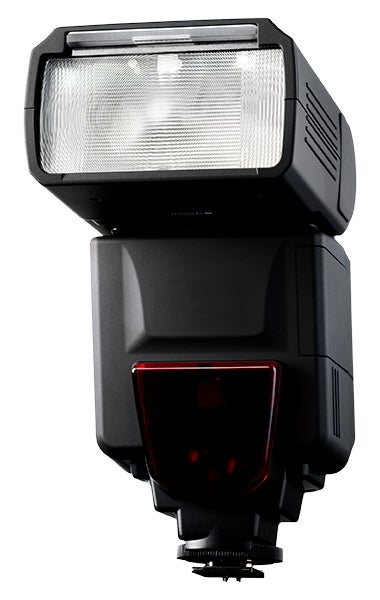Bob Newman looks at the development of the humble flashgun, from the electronic version onwards
 For the sake of brevity, this story will begin with the electronic flash. This type of flash depends on a reusable light source, unlike the bulb flashes that preceded it. The lamp is a tube filled with xenon gas. When an electric current passes through this gas, it forms a plasma that glows, providing an efficient source of light. The power is stored in a capacitor, working at a potential of several hundred volts. Even this voltage is insufficient to start the flash, so a separate trigger transformer multiplies the working voltage to several thousand volts to provide the required spark.
For the sake of brevity, this story will begin with the electronic flash. This type of flash depends on a reusable light source, unlike the bulb flashes that preceded it. The lamp is a tube filled with xenon gas. When an electric current passes through this gas, it forms a plasma that glows, providing an efficient source of light. The power is stored in a capacitor, working at a potential of several hundred volts. Even this voltage is insufficient to start the flash, so a separate trigger transformer multiplies the working voltage to several thousand volts to provide the required spark.
In early flash units, the trigger transformer was provided directly by the contacts in the camera’s shutter. In contemporary cameras, this was a simple mechanical switch that could easily stand the high voltages, but later cameras used a solid-state switch that couldn’t. This is why it is unwise to use old flashes on modern cameras.
The advent of solid-state switches, which could withstand high voltages, allowed this problem to be overcome. The first available was called a ‘thyristor’, in which a small low-voltage current in one terminal can control a high-voltage one in another. By using a thyristor, controlled by the camera’s trigger circuit, the flash could be made to fire while applying a small voltage to the camera’s circuitry. Thyristors were also applied to allow the amount of light emitted by the flash to be controlled, by ‘switching off’ the flash pulse when enough light had been issued. This allowed the use of the first ‘automatic’ flashguns, where the flash output was controlled to achieve the correct exposure.
The thyristor can switch on, but cannot switch off until the current through it stops flowing when the flash’s capacitor is discharged. Early units simply used a thyristor to short-circuit the flash tube to stop the flash, wasting any unused energy in the capacitor in the process.
A new type of solid-state switch was developed, the ‘insulated gate bi-polar transistor’ (IGBT), which could handle the voltages used, but could also be turned off. Using this, the flash could simply be interrupted when required, leaving unused energy stored for the next flash. This simple innovation in turn spawned a number of advances in addition to energy efficiency. The first was the ‘focal-plane’ flash mode, which turned the flash off and on to simulate a longer flash, and was suitable for focal-plane shutter units used at fast shutter speeds. Then there was remote flash control, in which the flash of a master unit was made to flash encoded commands to slave units.
Another was redeye reduction, where small pre-flashes are emitted to contract a subject’s pupils. Also using pre-flashes is the TTL flash control mode for digital cameras, in which a sensor in the camera measures the reflected light from a pre-flash to control the power of the main flash.




